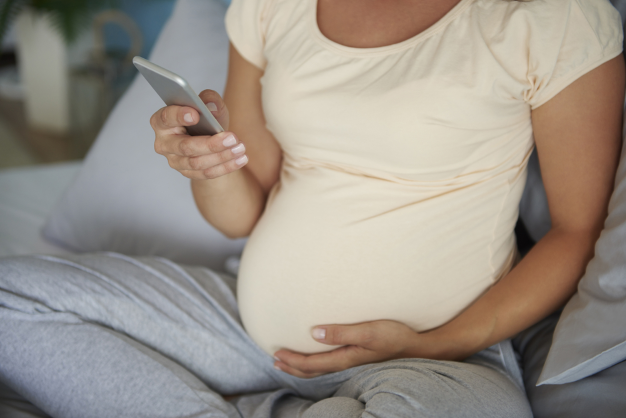Sally Ride was America’s first woman in space. To prep for her trip, male NASA engineers asked her if 100 tampons would be 'the right number' for her six-day flight. As you can imagine, Sally Ride said “that would not be the right number."
Although it might sound funny, this story highlights a real problem in health science. Women’s bodies are under-represented and under researched. It doesn't help that a lot of people still consider women's health topics like menstrual flow, menopause, ovulation, gynaecological disease and menstrual pain inappropriate for public discussion. And in some places, these topics are still taboo.
Also, the underrepresentation of women in science, technology, engineering and maths (STEM) jobs means the development of women's health technology has been less of a priority. No wonder the NASA engineers had little knowledge on periods.
Why are we telling you this? Because we want to share some good news in women's health technology.

The birth of femtech
In 2016, Ida Tin co-founder and CEO of the menstruation-tracking app Clue, coined the term femtech. The definition of femtech is technology to meet the specific health needs of women. Other definitions include technology made by women for women.
Femtech technologies frequently address women’s health and wellness across the continuum of a woman’s sexual and reproductive life. This ranges from menarche to menopause but also expands into disorders and illnesses like migraines and osteoporosis.The Femtech market value reached $US 22.5 billion globally in 2020. This is estimated to rise in the next decade due to advancements in digital health and increased lifestyle diseases. So, it’s a growing industry.
Benefits of women's health technology
Now we know there's an appetite for women's health technology and we have a fancy name. But what are the benefits?
Firstly, a growing list of women’s health needs will be addressed by digital products and services. Digital products increase the amount of customers that can be reached, as well as a potential savings in time and dollars.
Secondly, femtech pushes to have more women in the room when decisions are made. Female scientists’ lived experiences of womanhood can help inform gaps in women’s health that technology can help address. This is not to say you need to be a woman to understand women’s needs. But when there’s underrepresentation of any group in STEM, there can be oversight (remember the NASA engineers' problem?)
And lastly, there is great opportunity for the Australia market to be involved in Femtech. With the increase of women working in digital health and the growing post-COVID acceptance of technological solutions, we'll start to see more femtech surface 'downunder'.
CEO of the Australia E-Health Research Centre (AEHRC) David Hansen said they are already onto it. AEHRC is working on the digital transformation of healthcare to improve services and clinical treatment for Australians.
"AEHRC has a long history of developing digital tech solutions to the big health challenges faced by women. There are multiple benefits to an inclusive approach to health," David said
Femtech solution for pregnant women with diabetes
An app we developed to help expectant mothers and their health professionals manage gestational diabetes mellitus (GDM), is a great example of femtech. We developed the M♡THer[Link will open in a new window] app at AEHRC. It's just one of many femtech products we're working on.
GDM currently affects 15 to 20 per cent of pregnant women. It can also lead to birth complications such as early delivery, pre-eclampsia and caesarean section. So far, over 3000 women have benefited from using M♡THer. And initial results are promising, with most women reporting ease of use and satisfaction. M♡THer measures blood glucose levels, weight, blood pressure, stress, steps and more. Find out more about how the app works[Link will open in a new window].
M♡THer research scientist, Dr Marlien Varnfield doesn't want this disease to be more of a burden than necessary.
"Pen and paper management of glucose levels and other health measures to avoid undesirable child and maternal outcomes is a big burden on women with GDM, as well as the clinicians who support them," she said.
For women in rural and remote areas, it's even more of a burden. The app is currently being trialled at the Royal Brisbane Women’s, Mater Mother’s, Redland and Logan hospitals. The team are working out if the app can be used for other pregnancy related conditions like hypertension. There is also a focus on Aboriginal and Torres Strait Islander women in remote areas such as Mt Isa and Cairns.
Deputy Research Director of AEHRC, Dr Jill Freyne, has high hopes for this women-led and women-assisting technology.
"The need for remote sharing of data has become amplified due to COVID-19," Jill said.
"Virtual care technology like M♡THer has the potential to make access to healthcare easier, more inclusive and more effective."
